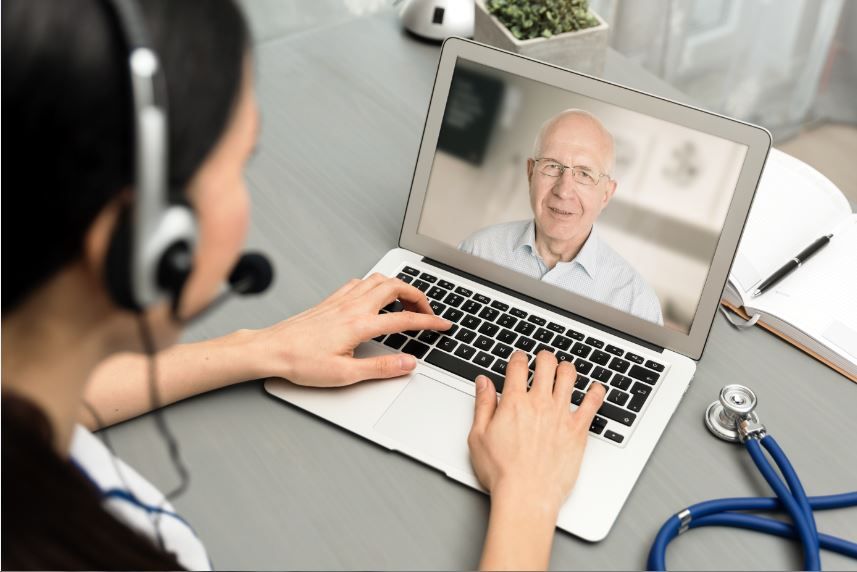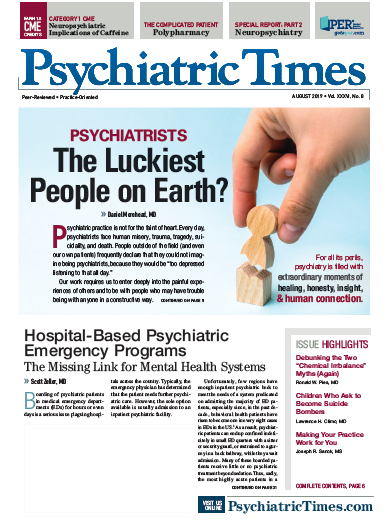Publication
Article
Psychiatric Times
The History and Value of Guidelines for Best Practices of Telemental Health
Author(s):
Telepsychiatry has its origins in the 1950s and has moved from an esoteric curiosity to mainstream practice. However, it has been challenged along the way at many turns.
©Proxima Studio

FROM THE NATIONAL NETWORK OF DEPRESSION CENTERS
Telepsychiatry has moved from an esoteric curiosity to mainstream practice. It has been challenged along the way at many turns. Some degree of scientific skepticism is required when considering any health care innovation. While the utility of telepsychiatry seemed obvious to many, it was always necessary to develop a robust literature in support of its effectiveness and for acceptance of this health care innovation and associated technology. That task was achieved long ago.
An outgrowth of the supporting evidence has been the creation and adoption of guidelines to assist clinicians in the implementation of telepsychiatry. The efforts at guidelines began shortly after the earliest attempts at instituting telemedicine practices. Historically, the American Psychiatric Association (APA) was a slow adopter of telepsychiatry. To its credit, over time it has moved from skepticism to gradual embrace, to acceptance and enthusiastic promoter of telepsychiatry.
Telepsychiatry has its origins in the 1950s. However, the more modern incarnation grew from Internet advances and the ubiquity of adequate bandwidth. As with any novel technology or practice, mainstream acceptance could only follow pilot projects and pioneering efforts. Protocols and processes were created from scratch for these initial programs. Those who are the first to put new tools into use do so without the benefit of established guidelines. However, it is only through such efforts that the data and evidence can be collected and the field refined to allow for the development of the standards that follow.
In this regard, telepsychiatry is no different from any other area of medicine where technical developments have moved from theory to established and routine practice. Activities, disciplines, and methods that are available to identify, implement, and monitor the available evidence in health care are called “best practices.”1 Such guiding principles must hold up to the scrutiny of those who are active in the field. Those protocols developed during the early adoption of a new technology must withstand repeated challenges if they are to garner wide acceptance and mainstream implementation. The evolution of telepsychiatry has followed this process. Specific technical organizations formed and grew to support such innovation. These groups then give back to the field through the aggregation of data followed by thoughtful synthesis and promulgation of this material to others who are prepared to follow.
Current best practices for videoconferencing-based telemental health
With suitable fanfare, the most recent version of Best Practices in Videoconferencing-Based Telemental Health was adopted by both the APA and the American Telemedicine Association (ATA) in the spring of 2018. The foundational texts were updated, streamlined, and harmonized and culminated in this co-branded document. While the chair of the APA telepsychiatry committee is a psychiatrist by definition, it is not a given that a psychiatrist, or even a physician necessarily, would happen to hold either of the two key ATA offices. This fortuitous arrangement of office holders and the opportunity to synchronize between the two organizations greatly facilitated the creation of this document.
When the writing committee convened to begin work on the new co-branded document, they drew upon precursor works that dated back to 1998.2 On the APA side, it required the merging and updating of ATA works from 2009 and 2013.3,4 A writing committee composed of 11 thought leaders from both organizations undertook an iterative writing process that produced the new document. Support staff from both organizations also contributed to the success of the final product. Once a working draft was completed, it was distributed to larger groups within the two organizations including the Telemental Health Special Interest Group (TMH SIG) of the ATA, the APA Committee on Telepsychiatry, the ATA Standards and Guidelines Committee, as well as both ATA and APA staff. Feedback from this extended review was incorporated into the final work, which has been received with widespread acceptance within the field.
The final product serves as an example of high level collaboration between large organizations working toward a common goal. The document became available online on the websites of both APA and ATA and was recently published in Telemedicine and e-Health, the leading journal of the telemedicine field.5 The document itself stands as a succinct summation of accepted best practices for deploying telemedicine technology in the service of mental health care.
The process by which the document came into existence, was refined, and ultimately promulgated should also serve as an example. Other areas of the medical field where multiple groups are working in an area with intrinsic and overlapping interests in the success and growth of that initiative could benefit from emulating this process. Writings on technology topics are prone to having relatively short shelf-lives as the technologies themselves rapidly evolve. This concern was embraced by the writing group through a focus on outlining principles and practices that are less likely to be subject to obsolescence in the face of technological progress. Hopefully the stage has been set for future collaborations of this sort. When the time for an inevitable updating of the document is required, perhaps a similar representative group of professionals will come together for that task as well.
Disclosures:
Dr Caudill is Professor, Director, Psychiatry Resident Training Program, and Director, Telemedicine and Information Technology Programs, Department of Psychiatry and Behavioral Sciences, University of Louisville School of Medicine, Louisville, KY; Dr Shore is Chief Medical Officer, AccessCare (a company that provides telemental health services). Dr Caudill reports no conflicts of interest concerning the subject matter of this article); Dr Shore reports that he receives royalties from American Psychiatric Association Publishing, and he serves on the Board of Directors of APA.
Acknowledgment-This article is contributed by National Network of Depression Centers (NNDC) Telehealth Interest Group, of which Drs Caudill and Shore are the co-chairs. NNDC’s goal is to foster collaborative research to advance scientific discovery and drive forward improved care for patients with depression and mood disorders. NNDC is an American-based initiative and is a content partner of Psychiatric Times.
References:
1. Perleth, M, Jakubowski E, Busse R. What is “best practice” in health care? State of the art and perspectives in improving the effectiveness and efficiency of the European health care systems. Health Policy (Amsterdam). 2001;56:235-250.
2. American Psychiatric Association. Telemental Health Via Videoconferencing; 1998.
3. Yellowlees P, Shore J, Roberts L. Practice guidelines for videoconferencing-based telemental health: October 2009. Telemed eHealth. 2010;16(:1074-1089.
4.American Telemedicine Association. Practice Guidelines for Video-Based Online Mental Health Services; 2013;19:722-730.
5. Shore JH, Yellowlees P, Caudill R, et al. Best Practices in Videoconferencing-Based Telemental Health. Telemed e-Health. November 2018; Epub ahead of print.







